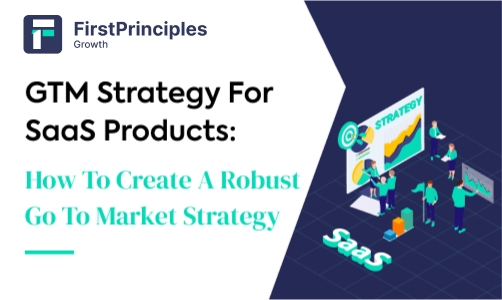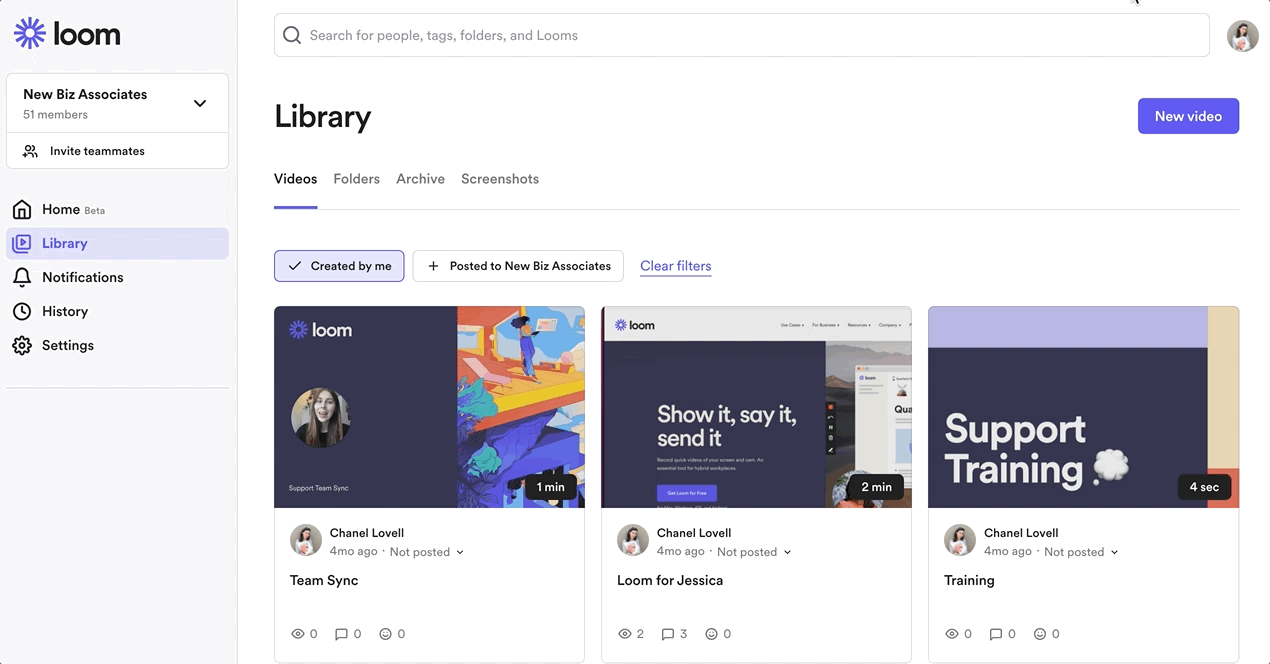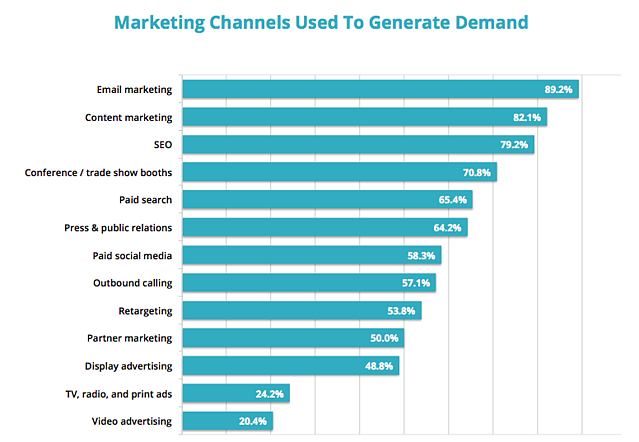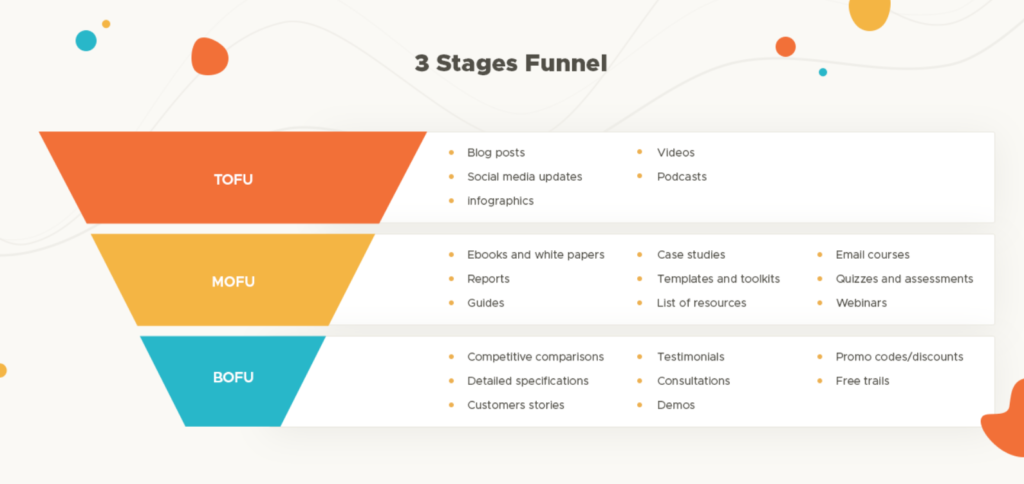
Home > GTM strategy for SaaS Products: How to Create a Robust Go To Market Strategy?
Table of Contents
ToggleWhether you’re planning to launch your first-ever startup or your 5th one, a go-to-market strategy is a must. It can help you lay down the path to reach your potential buyers at the right moment, capture their attention and turn them into loyal users.
In this blog, you’ll learn everything about go-to-market strategies. We will cover what a GTM strategy is, why you need it, different go-to-market strategies, and how to create one for your SaaS business using real examples.
Let’s get started!
A go-to-market strategy outlines how you present your product in the market. It’s a comprehensive guide highlighting the potential customer, target market, the best marketing efforts and sales strategy you need to implement to reach them, positioning tactics, pricing strategy, and much more.
Go-to-market plans help SaaS marketers ensure that your product launch is smooth and your SaaS product gets in front of the right customers at the right time and stands out from the competition that has overtaken the market.
“Don’t launch a product without a go-to-market strategy.” Yes!
A study by Harvard Business School showed that every year 95% of new products fail [source], which is alarming.
A long-range view of the product roadmap and a robust GTM strategy is necessary to keep your SaaS in the safe zone. Unless you’re a daredevil, you won’t risk pushing your SaaS into the market without a go-to-market strategy, as it can lead to low conversion rates and high churn while you get a glimpse of your ideal customer’s mindset.
A GTM strategy will help you:
When launching a new product or new features for your existing product, you need a robust plan to help you grab the attention of your ideal customers and penetrate the market. This is where GTM can help create a detailed plan for launching your SaaS correctly.
A GTM is a hyper-focused one-time strategy that helps you pierce through the market at launch time. A go-to-market strategy enables you to chalk out a strategy for the launch phase of your product but also allows you to achieve a product-market fit by laying the groundwork for upcoming product updates.
On the other hand, a marketing strategy helps you plan the next steps once the product is launched. It involves continuous efforts to acquire customers and maintain your position in the market. Additionally, marketing strategy focuses on distribution channels, actions, and target audiences.
Here’s a glimpse of some real GTM strategy examples.
Loom, a screen recorder created in 2016, has become an essential tool for hybrid workspaces. The popularity and adoption of Loom gained momentum, especially in the covid-WFH era. Users could quickly share their recorded videos with teammates. The ease with which it allows users to create short videos, share them, and get opinions of other team members on a particular topic served as a way of getting the product around quickly and encouraged them to sign up for a free trial.

Image source: Loom
Several members tested a messaging app designed specifically for the workplace before it was officially launched for use by the customers. The main motive behind it was to try whether the product, ready for launch, was market-fit or not. Within a day of its launch, it garnered 8,000 sign-ups which increased to 1.1 million in the next 4 months.
What worked great for this tool was the word-of-mouth strategy that allowed gathering crucial product insights before launching. This also helped reduce customer acquisition costs. This product-led SaaS company leveraged their customers’ experience of their product to draw meaningful conclusions and get insights that eventually helped them enter the unicorn club.
SyndicationPro, a thriving startup founded in 2016, is an all-in-one investment management tool for ease of management in commercial real estate.

During the initial development phase, the product went through rounds of enhancements based on the feedback received from the actual target audience – the investors. For the product launch, word-of-mouth worked wonders for the product to gain new subscribers and then gradually grow their LTV.
Before deploying your product in the market, you need solid groundwork to decide on how you want your ideal customer base to approach your product and how you can acquire more and more customers. Here are some go-to-market strategies that can help you get started:
As is evident by the name, your product is at the center of all your marketing and sales efforts; your product drives acquisition, activation, and retention. The pricing model SaaS companies usually leverage is an either freemium or free trial to give the users a glimpse of your product and how it will solve their pain points. This makes it easier for them to decide whether or not they want to become paying customers.
A great tip is to enhance your onboarding sequence to get people to the AHA Moment & make upgrading easier. Example: Ahrefs, Slack, and Dropbox.
The community is the main driver for your SaaS product’s acquisition, retention, and expansion. Although you will need time to build a strong connection and engage actively with your community, CLG helps get early and, more often than not, constructive feedback for your SaaS before pushing it out into the market. A pro tip is ensuring that the community is well-aware of their mission and where they fit in with the process.
In this strategy, businesses use content to engage and nurture customers along the marketing funnel. A vital advantage of this strategy is that it reduces the customer acquisition cost and helps you make people aware of your product right at the start. However, MLG does take time to show results, and if you are looking for immediate results, this is not an ideal choice. However, you can use this strategy as a supporting pillar for any other strategy. A pro tip is to start sharing about your product even before your product is finished.
This strategy all depends on your sales team’s ability to convert users brought in by the marketing efforts. A sales-led strategy’s success will rely on your marketing team’s lead generation efforts and how good your sales representatives are in convincing prospects to convert. You will, however, need to ensure that your marketing and sales teams work in sync. Example: Salesforce, HP, Microsoft, etc., where users need some guidance beforehand.
You need to follow a structured path to ensure that your product lands in front of the right people and gets traction right off the bat. Here are the steps that you should take into consideration when creating an effective GTM strategy:
Prepare a list documenting your goals, tactics, strategies, competitors, vision, mission, and value statements—factor in the budget, operating, and action plans. You need to create an outline of your company and your SaaS product. Also, document your team’s tools to achieve the preset objectives and a risk management plan if things go south.
Understand your user persona, the audience willing to invest time and money in your product, and the audience you designed your product for in the first place. They will determine every other part of your SaaS GTM strategy. Who is going to benefit the most from your product? Who are you planning to target when you launch your SaaS? And how do you plan on reaching them?
Once you have this information in place, you can work on creating a solid marketing plan and campaigns around them.
To effectively launch your product, you need to understand its entirety — its key features, USPs (unique selling points), and value. A value proposition canvas or value matrix (you can choose either) can help you highlight user problems and their pain points and position your product as the best solution. Additionally, to aid with your value map, you need to analyze your direct competitors dominating the market in-depth.

Source: Social Innovation Academy
You can also curate marketing messages for your landing page and social media channels. It will help you identify the right features and functionalities to market that your customers want, which will boost the conversion rate.
SaaS companies can choose from different pricing strategies and even create a hybrid version by combining two or more suitable models. However, keep in mind that pricing is vital for market penetration. Although you can run competitive analysis and see what works in the market, it all boils down to how much you understand your audience and the market.
You can choose from a wide variety of models, including a feature-based, per-user, per-storage, tiered, free trial, freemium and more. Review each model and check if it suits your Saas and fits in your strategy
A solid marketing strategy should explain how you plan on reaching your target audience, what channels you plan to use to reach out to them, and how you can create brand awareness and get the attention of potential buyers?
Many SaaS businesses use content marketing and SEO (like Hubspot) to create authority in their field by helping their target audience. Here are some other commonly used marketing channels:

Source: New breed revenue
The SaaS marketing funnel plays a pivotal role in lead generation and increasing the conversion rate. A typical marketing funnel comprises three sections:

Source: Singlegrain
For each stage of the funnel, you must ensure that the marketing campaigns are specific and targeted. You need to address the entire customer journey and try to enhance it to lead to better conversion rates. For instance, for Top of the Funnel (ToFu), you can create and share how-to guides, blogs, infographics, and tutorial videos, whereas, for Middle of Funnel (MoFu), case studies, webinars, and guides work better. For Bottom of the Funnel (BoFu), you can try testimonials, courses, and free trials. With each stage, your intent should be to make your users’ journey hassle-free.
Now that all the heavy lifting is done and you have implemented a go-to-market strategy for your product, you need to evaluate your strategy and optimize it to improve its performance. Although there are several metrics you can track, we have narrowed it down to 4 key metrics:
As discussed, if your LTV is > CAC, you’re on the right track. If you have a new product, an LTV: CAC ratio of anything >= 2:1 is acceptable. If it’s below 2:1, it calls for optimization of your GTM strategy.
As for lead conversion rates, you should be fine if you’re anywhere between 2% and 5%.
On the other hand, keeping tabs on channel-wise spending and revenue will help you identify which channels are performing the best and which ones you can discard or alter your strategy.
There is no set path for a successful go-to-market strategy; you need to contextualize and tailor it according to your SaaS product and objectives. A GTM strategy is a critical step in SaaS development and launch. Regardless of your product’s quality, an excellent go-to-market strategy can help you launch the right way at the right time.
The aforementioned steps will help you kickstart the process. Along with this, you will need the right team to implement the strategy. At Firstprinciples, we have helped several SaaS businesses with their strategies. We can help you develop GTM specific to your requirements. Get in touch with us today, and we’ll be glad to work with you!
Heebatullah
Technical Content Strategist and Inbound Analyst at FirstPrinciples, Heba is a motivated self-starter with a knack for analyzing and solving tough business problems. When not working, you can find her either reading a book, painting landscapes or sketching places she yearns to visit one day. @Heebatullah